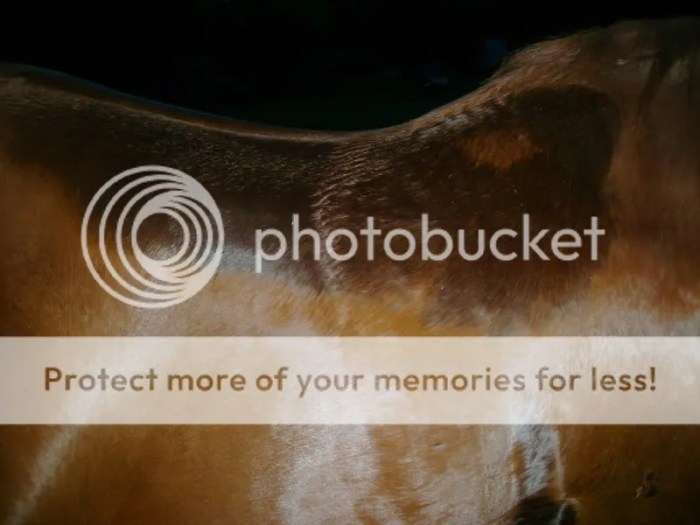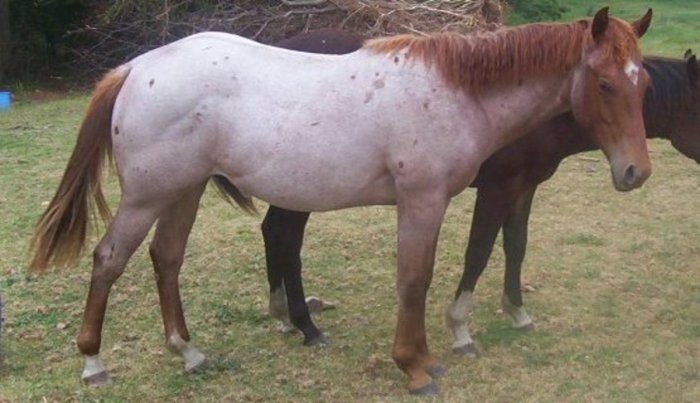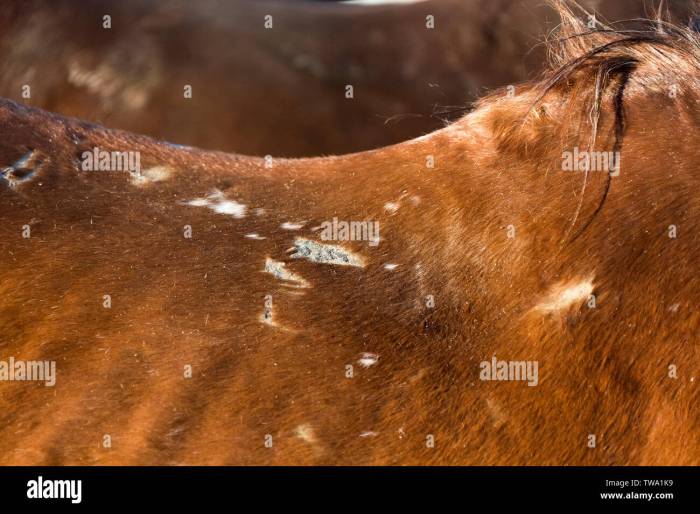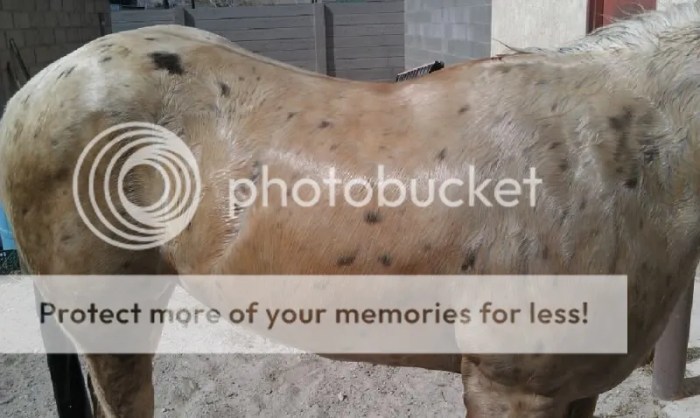Bend or spots on horses – Delving into the fascinating world of bends and spots on horses, this article unveils the complexities and significance of these equine characteristics. From the intricacies of bending techniques to the diverse causes and treatments of spots, we embark on an exploration that illuminates the health, performance, and aesthetics of these majestic creatures.
As we delve deeper into the topic, we will unravel the different types of bends and their applications in riding and training, shedding light on the crucial role of proper bending for horse well-being and athleticism.
Bends on Horses: Bend Or Spots On Horses

Bending is a fundamental aspect of riding and training horses. It involves flexing the horse’s body laterally, allowing it to move smoothly and efficiently. There are various types of bends, each with its purpose and application.
Types of Bends
- Inward Bend:The horse bends towards the inside of the circle or arc.
- Outward Bend:The horse bends towards the outside of the circle or arc.
- Lateral Bend:The horse bends sideways without moving forward or backward.
- Longitudinal Bend:The horse bends its body along its length, forming a curve.
Importance of Bending
Proper bending is crucial for horse health and performance. It helps to:
- Improve Flexibility:Bending exercises increase the horse’s range of motion and flexibility.
- Strengthen Muscles:The muscles involved in bending become stronger, supporting the horse’s back and preventing injuries.
- Enhance Coordination:Bending requires the horse to coordinate its movements, improving its overall balance and agility.
- Facilitate Communication:Riders use bending cues to communicate with their horses, directing their movements and encouraging desired behaviors.
Applications in Riding and Training
Bends are used in various riding and training scenarios:
- Turning:Bends are essential for turning horses, allowing them to navigate corners and obstacles smoothly.
- Lateral Movements:Lateral bends are used in movements such as side-passing and leg-yielding.
- Collection:Inward bends help collect the horse, bringing its weight onto its hindquarters and improving its responsiveness.
- Dressage:Bends are a fundamental component of dressage tests, demonstrating the horse’s flexibility and obedience.
Spots on Horses

Spots on horses are a common occurrence, and they can vary greatly in appearance, size, and location. While some spots are simply cosmetic, others may be indicative of an underlying health condition.
There are several different types of spots that can appear on horses, including:
- Birthmarks: These are spots that are present at birth and are usually caused by a genetic mutation.
- Sunspots: These are spots that are caused by exposure to ultraviolet (UV) radiation from the sun.
- Age spots: These are spots that develop as a horse ages and are caused by the accumulation of melanin in the skin.
- Fungal spots: These are spots that are caused by a fungal infection.
- Bacterial spots: These are spots that are caused by a bacterial infection.
The treatment for spots on horses will depend on the underlying cause. In some cases, no treatment is necessary. However, if the spots are causing discomfort or are a sign of an underlying health condition, treatment may be necessary.
Diagnosis
The first step in treating spots on horses is to diagnose the underlying cause. This can be done through a physical examination and a review of the horse’s medical history. In some cases, additional tests, such as a skin biopsy, may be necessary to confirm the diagnosis.
Treatment
The treatment for spots on horses will depend on the underlying cause. In some cases, no treatment is necessary. However, if the spots are causing discomfort or are a sign of an underlying health condition, treatment may be necessary.
Treatment options for spots on horses may include:
- Topical medications: These medications are applied directly to the skin and can help to treat fungal and bacterial infections.
- Oral medications: These medications are taken by mouth and can help to treat systemic infections.
- Surgery: In some cases, surgery may be necessary to remove spots that are causing discomfort or are a sign of an underlying health condition.
Leg Spots on Horses

Leg spots on horses are a common occurrence and can be caused by a variety of factors. Some leg spots are harmless, while others may indicate a more serious underlying condition.
There are several different types of leg spots on horses, including:
- Sunspotsare caused by prolonged exposure to the sun and are typically found on the horse’s legs, face, and muzzle. Sunspots are usually brown or black in color and can range in size from small freckles to large patches.
- Mud feveris a bacterial infection that causes scabs and crusty lesions on the horse’s legs. Mud fever is most common in wet, muddy conditions and can be very uncomfortable for the horse.
- Scratchesare small, scabby lesions that are caused by a variety of factors, including insect bites, scratches, and abrasions. Scratches are typically found on the horse’s legs and can be very itchy.
- Rain rotis a fungal infection that causes crusty, scabby lesions on the horse’s legs. Rain rot is most common in wet, humid conditions and can be very difficult to treat.
- Equine herpesvirus (EHV)is a virus that can cause a variety of symptoms in horses, including leg spots. EHV is a highly contagious virus and can be spread through contact with infected horses or their secretions.
The treatment for leg spots on horses will depend on the underlying cause. Some leg spots, such as sunspots, do not require treatment. Other leg spots, such as mud fever and scratches, can be treated with topical antibiotics or antifungal medications.
If your horse has leg spots, it is important to consult with a veterinarian to determine the underlying cause and to get the appropriate treatment.
White Spots on Horses

White spots on horses, also known as depigmentation, are areas of the skin and hair that lack pigment. They can vary in size, shape, and location and can occur anywhere on the horse’s body. White spots are not typically a cause for concern and are often considered a cosmetic issue.
The distinctive bends or spots on horses, known as markings, add to their unique characteristics. While these markings can be visually striking, their presence or absence doesn’t alter the horse’s genetic makeup. Just like the letters in a DNA sequence, such as the a in DNA , these markings are inherited traits that contribute to the horse’s identity.
Understanding the genetic basis of these markings can help breeders and owners make informed decisions about breeding and care.
However, in some cases, they may be a sign of an underlying medical condition.
Types of White Spots on Horses
There are several different types of white spots that can occur on horses. The most common type is a birthmark, which is a white spot that is present at birth. Birthmarks are usually small and round and do not change in size or shape over time.
Other types of white spots include:
- Vitiligois a condition that causes the skin and hair to lose pigment in patches. The patches can be any size or shape and can occur anywhere on the horse’s body. Vitiligo is not a painful condition, but it can be unsightly.
- Grayingis a natural process that occurs as horses age. As horses get older, their hair gradually turns gray. Graying is not a sign of illness, but it can be a sign that the horse is getting older.
- Sunburncan also cause white spots on horses. Sunburn occurs when the horse’s skin is exposed to too much sunlight. The white spots are caused by the damage to the skin cells. Sunburn can be prevented by providing the horse with shade and using sunscreen.
Causes of White Spots on Horses, Bend or spots on horses
The cause of white spots on horses can vary depending on the type of spot. Birthmarks are caused by a genetic mutation that affects the production of pigment. Vitiligo is caused by an autoimmune disorder that attacks the pigment-producing cells in the skin.
Graying is a natural process that occurs as horses age. Sunburn is caused by exposure to too much sunlight.
Treatment Options for White Spots on Horses
There is no cure for white spots on horses. However, there are some treatments that can help to improve the appearance of the spots. These treatments include:
- Laser therapycan be used to remove birthmarks and vitiligo spots. Laser therapy is a safe and effective treatment that does not cause any scarring.
- Surgerycan be used to remove large birthmarks or vitiligo spots. Surgery is a more invasive treatment than laser therapy, but it can be more effective in removing large spots.
- Sunscreencan be used to prevent sunburn and the development of white spots. Sunscreen should be applied to the horse’s skin before they are exposed to sunlight.
White spots on horses are not typically a cause for concern. However, if you are concerned about the appearance of white spots on your horse, you should consult with a veterinarian to determine the cause and discuss treatment options.
Black Spots on Horses
Black spots on horses can vary in size, shape, and location. They can be caused by a variety of factors, including genetics, sun exposure, and skin irritation. In most cases, black spots are harmless and do not require treatment. However, if the spots are causing discomfort or are accompanied by other symptoms, it is important to consult a veterinarian.
Causes of Black Spots on Horses
There are several different causes of black spots on horses. Some of the most common causes include:
- Genetics: Some horses are simply born with black spots. These spots are usually small and round, and they are typically located on the horse’s legs, belly, or back.
- Sun exposure: Sun exposure can cause black spots to develop on horses’ skin. These spots are usually flat and irregularly shaped, and they can range in color from light brown to black.
- Skin irritation: Skin irritation can also cause black spots to develop on horses. This irritation can be caused by a variety of factors, such as insect bites, allergies, or fungal infections.
Treatment Options for Black Spots on Horses
In most cases, black spots on horses do not require treatment. However, if the spots are causing discomfort or are accompanied by other symptoms, it is important to consult a veterinarian. The veterinarian may recommend a variety of treatment options, depending on the underlying cause of the spots.Some
of the most common treatment options for black spots on horses include:
- Sunscreen: Sunscreen can help to prevent black spots from developing on horses’ skin. It is important to choose a sunscreen that is specifically designed for horses, as some human sunscreens can contain ingredients that are harmful to horses.
- Antihistamines: Antihistamines can help to relieve itching and inflammation caused by skin irritation. They can be given orally or applied topically to the affected area.
- Antibiotics: Antibiotics may be prescribed if the black spots are caused by a bacterial infection.
- Surgery: Surgery may be necessary to remove black spots that are large or that are causing significant discomfort.
Clarifying Questions
What are the different types of bends on horses?
Horses can bend laterally, longitudinally, and vertically, allowing for a wide range of movements and athletic maneuvers.
What causes spots on horses?
Spots on horses can result from various factors, including genetics, sun exposure, skin infections, and certain medical conditions.
How can leg spots on horses be treated?
Treatment options for leg spots on horses depend on the underlying cause and may involve topical ointments, antibiotics, or surgical intervention.